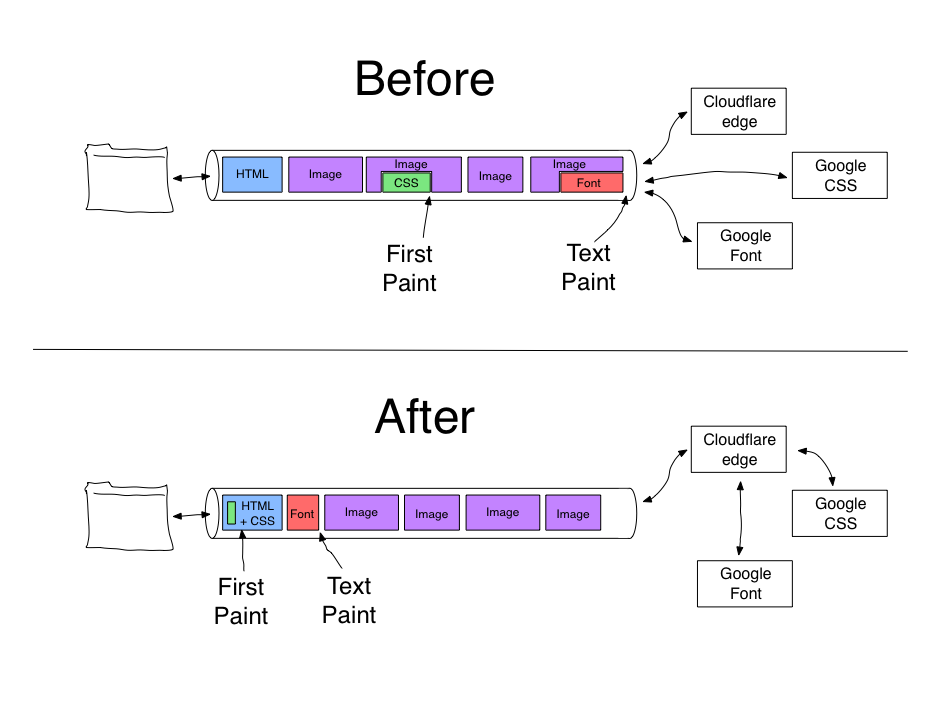From Excel to Network Infrastructure as Code with Carl Buchmann
After a series of forward-looking podcast episodes we returned to real life and talked with Carl Buchmann about his network automation journey, from managing upgrades with Excel and using Excel as the configuration consistency tool to network-infrastructure-as-code concepts he described in a guest blog post in February 2018
Read more ...Cisco Expands Intent-Based Networking Portfolio
The expansion of the portfolio brings IBN to the end-to-end network and can be deployed at customers of all sizes.
PQ 159: The SATCOM Primer For Network Engineers
Today's Priority Queue is a primer on satellite communications for military and commercial networks, including key basics on frequency bands and coverage areas, how different orbits affect network design, and more. Our guests are PC Drew and Evander Cook.
The post PQ 159: The SATCOM Primer For Network Engineers appeared first on Packet Pushers.
How to Avoid Being the Network Turkey
In honor of the Thanksgiving holiday, we’ve put together a few handy tips on how to avoid becoming the network turkey. While many may enjoy it at the family dinner table, nobody wants to be the turkey at work, causing disruptions for their coworkers and organization.
Fast Google Fonts with Cloudflare Workers

Google Fonts is one of the most common third-party resources on the web, but carries with it significant user-facing performance issues. Cloudflare Workers running at the edge is a great solution for fixing these performance issues, without having to modify the publishing system for every site using Google Fonts.
This post walks through the implementation details for how to fix the performance of Google Fonts with Cloudflare Workers. More importantly, it also provides code for doing high-performance content modification at the edge using Cloudflare Workers.
Google fonts are SLOW
First, some background. Google Fonts provides a rich selection of royalty-free fonts for sites to use. You select the fonts you want to use, and end up with a simple stylesheet URL to include on your pages, as well as styles to use for applying the fonts to parts of the page:
<link href="https://fonts.googleapis.com/css?family=Open+Sans|Roboto+Slab"
rel="stylesheet">
<style>
body {
font-family: 'Open Sans', sans-serif;
}
h1 {
font-family: 'Roboto Slab', serif;
}
Your visitor’s browser fetches the CSS file as soon as the HTML for the page is available. The browser will request the underlying font files when the browser does layout for the page and discovers that it needs Continue reading
Philippines Department of ICT Sets the Multistakeholder Model into Action

Early this year, we embarked on an initiative with the Philippines Department of ICT (DICT) to co-develop the country’s National ICT Ecosystem Framework (NIEF) in a multistakeholder fashion. The NIEF, which succeeds the Philippine Digital Strategy, will guide the course of ICT use and development, as well as the priority areas for government, until 2022.
Our collaboration builds upon the success of the Philippine Chapter’s work with key stakeholders to advance open Internet development in the country, particularly in the policy sphere, and DICT’s sustained drive to expand avenues for participation in its policy formulation. Just last year, DICT and the Chapter, together with the Foundation for Media Alternatives, spearheaded the first Philippine Internet Governance Colloquium, which has been scaled up to a countrywide roadshow this year to help address pertinent Internet issues in different localities.
Having formalized our partnership in a memorandum of understanding, signed in July by DICT’s Secretary, Eliseo M. Rio, and the Internet Society’s Regional Bureau Director for Asia-Pacific, Rajnesh D. Singh, we pledged to support the DICT in embedding the multistakeholder approach not only in the framework’s development but in its implementation. Our engagement was complemented by an Internet Governance training workshop Continue reading
ONUG Europe 2018 – What to Expect
 SDxCentral spoke with Nick Lippis, ONUG co-founder and co-chair, about ONUG’s first conference in Europe. The event is part of a partnership with Barclays, and will be held December 7 at their corporate headquarters in London.
SDxCentral spoke with Nick Lippis, ONUG co-founder and co-chair, about ONUG’s first conference in Europe. The event is part of a partnership with Barclays, and will be held December 7 at their corporate headquarters in London.
Big Cloud Players, Other Hyperscalers Spend $26B on Capex in Q3 2018
 Beyond the usual suspects, Alibaba's capex leapt in the quarter putting it ahead of many other hyperscale operators.
Beyond the usual suspects, Alibaba's capex leapt in the quarter putting it ahead of many other hyperscale operators.
GSMA Launches Edge Cloud Initiative for Operators
 Huawei is a key player in the group, which might explain why no U.S. operators are members.
Huawei is a key player in the group, which might explain why no U.S. operators are members.
Pivot3 HCI Beats Dell EMC, HPE for Airport Data Center Modernization
 The vendor’s resiliency also improved airport security. “With security you can’t afford any downtime,” said the director of IT and security at Charleston International Airport.
The vendor’s resiliency also improved airport security. “With security you can’t afford any downtime,” said the director of IT and security at Charleston International Airport.
Microsoft Spreads Open Enclave SDK, Integrates With Azure IoT Edge
 The SDK abstracts the developer away from having to deal with hardware security.
The SDK abstracts the developer away from having to deal with hardware security.
SDxCentral’s Weekly Roundup — November 21, 2018
 Cisco acquires software provider Ensoft; AWS expands language processing service and Snowball; and the LF Networking Fund grows its membership.
Cisco acquires software provider Ensoft; AWS expands language processing service and Snowball; and the LF Networking Fund grows its membership.
Africa Needs Its Internet Institutions More Than Ever, Especially AFRINIC

At the recent African IGF in Khartoum, on November 5, participants of the workshop on “Strengthening the Institutional Capacity of Critical African Internet Institutions” hailed the achievements of African Internet institutions in bringing connectivity and broadening access in the last decades. They also recognized their shortcomings and stressed the need to address them so that they continue to serve the continent amidst the potential challenges that it will be facing in the future, as the African Internet grows and more users come online. The workshop was organized by AFTLD, the African Union Commission, and the Internet Society.
Fifteen years ago, Africa had less than 3% Internet penetration and was trailing far behind the rest of the world. Today, with a third of its population connected to the Internet, Africa’s connectedness is still behind but in a much better position than before, since the gap in Africa and the rest of the world has been shrinking. In fact, some countries in Africa have connectivity levels comparable to those of developed countries – something unimaginable fifteen years ago!
The progressive increase in Internet penetration in Africa could not happen without its regional Internet organizations, known as Af*, and the various NOGs (Network Continue reading
I’m back, again.
History Of Networking – JR Rivers – Linux Routing
Outro Music:
Danger Storm Kevin MacLeod (incompetech.com)
Licensed under Creative Commons: By Attribution 3.0 License
http://creativecommons.org/licenses/by/3.0/
The post History Of Networking – JR Rivers – Linux Routing appeared first on Network Collective.
Edge Computing Security Dos and Don’ts
Edge computing offers multiple benefits in an IoT environment, but one thing you don't want to be on the edge about is edge computing security.